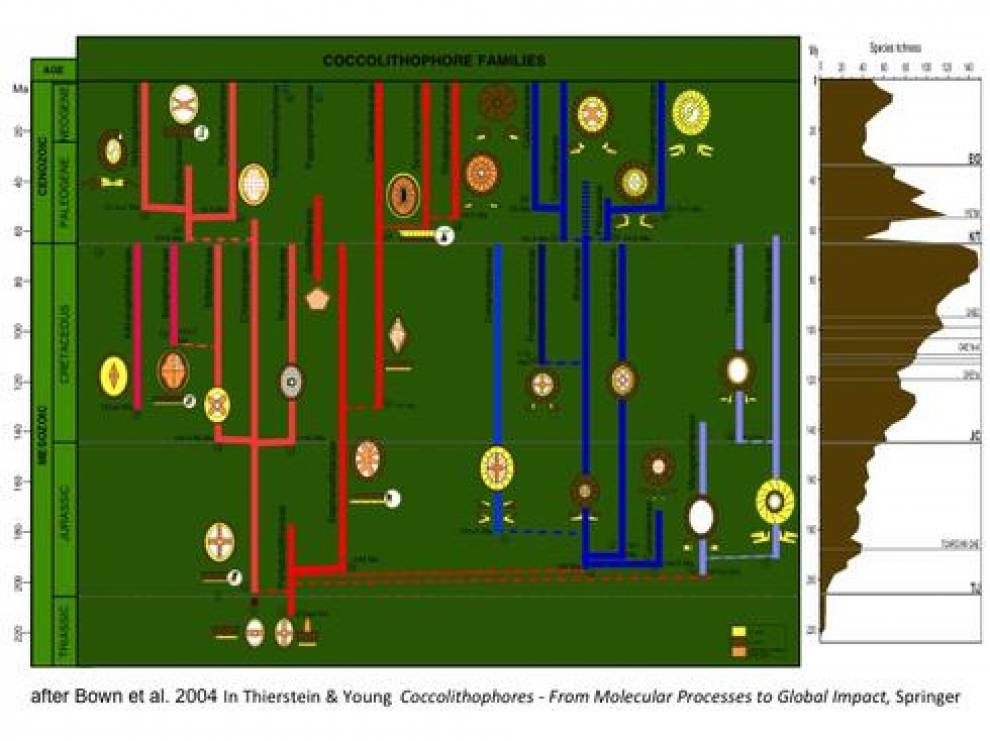To provide robust information about evolution we need to study biological groups that fossilise readily and provide abundant specimens from widespread localities. Calcareous nannofossils are present in almost all marine sediments stretching back over 200 million years, and billions of specimens are present in very small samples of sediment (<1cm3).

Nannoplankton family tree and diversity history
This allows us to reconstruct their evolutionary history, e.g. first appearance, times of high diversity or extinction, etc., and to investigate the relationship between evolutionary trends and possible controlling factors, such as climate, ocean chemistry and tectonics. Nannofossils have been particularly useful in understanding rapid and catastrophic events, such as the large meteorite impact event that occurred at the end of the Cretaceous (65.5 million years ago). It was this event that ended the reign of dinosaurs on land, and ammonites and large reptiles in the sea, but it also almost obliterated several plankton groups in the oceans, including nannoplankton and planktic foraminifera. Nannoplankton studies provide detailed records of the precise timing and recovery associated with this mass extinction event and show that the extinction was geological instantaneous and global, eradicating the oceanic species but with survivorship limited to the hardier, opportunistic forms that lived in shelf-sea environments. Recolonisation of the oceans was rapidly achieved through the descendants of these survivor species.
 Close
Close

